 Pat Oliphant is the premiere editorial cartoonist living today. His work combines classic draftsmanship, beauty and mastery of medium with a powerfully keen sardonic edge and an unmatched ability to marry symbols to issues.
Pat Oliphant is the premiere editorial cartoonist living today. His work combines classic draftsmanship, beauty and mastery of medium with a powerfully keen sardonic edge and an unmatched ability to marry symbols to issues.And one of the things that makes his work so singular, and has earned him the Pulitzer Prize and a place in the collections of the Library of Congress, is his timeliness; his eye catches those foolish evils of civic outrage that repeat again and again over decades, and he captures them in a way that remains fresh and open to continually new interpretations. Here is how the Library describes him in the introduction to Oliphant's Anthem; Pat Oliphant at the Library of Congress:
"Pat Oliphant won the Pulitzer Prize for editorial cartooning in 1966, just two years after he left his native Australia for an American career. Now, thirty years later, he is considered among the most gifted practitioners in the history of the profession...Because we can read him several times a week, and his work is familiar to nearly anyone who ever picked up a newspaper, it's easy to dismiss him as just another cartoonist. The familiarity renders him mundane. But he is anything but, and he has been particularly fine these last years of the Bush occupation, and especially with regard to the Iraq War. So I wanted to call your attention to the site--visit it and become acquainted with his amazing body of work. Below find a sampling of his earlier works, which resonate with relevance for today.
Oliphant weds two great traditions in political cartooning: the subtle wit and detailed artistry of the British tradition with the more blunt, spare style that persists in America. At the Library of Congress his cartoons and sketchbooks will be preserved alongside the most extensive collection of American political prints in existence, one of the finest assemblages of English satirical prints outside Great Britain, and thousands of original works by the most influential European and American cartoonists from the seventeenth century forward."
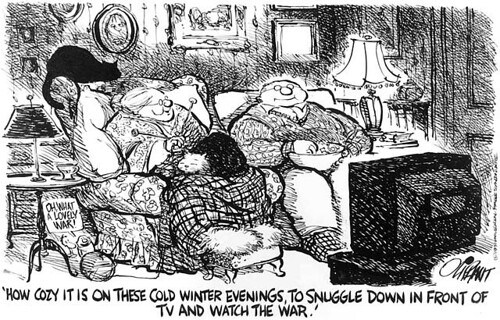
Above: Drawn when the 1991 Gulf War began. The streets were full of celebration, flag-waving and jingoistic fever. I remember being afraid to voice my dissent in the small, conservative town where I lived. Dissenters were threatened and sometimes harmed.
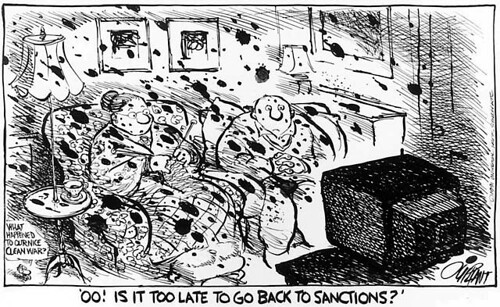
Above: Published the day after the February 13, 1991 bombing of a building where Iraqi civilians had taken shelter and pictures of the victims had filtered onto television past the Pentagon media blackouts, to shock the clueless American public.
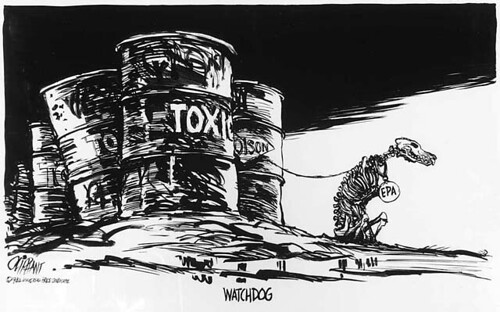
Above: The destruction of the EPA, as epitomized by the appointment of Ann Goresuch and the beginning of the ruination of the Superfund, in 1982. Today, with the Bush appointment of Stephen Johnson at the EPA and the steady erosion of monies for the Superfund and other programs to deal with toxic chemicals, the agency is virtually moribund.

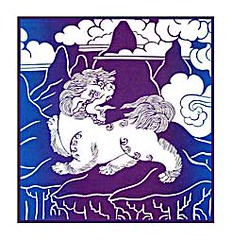


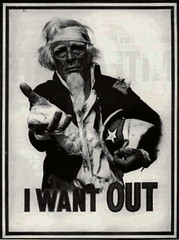
No comments:
Post a Comment